Why ‘Got Milk?’ Is One of the Greatest Ad Campaigns of All Time
But did it get Americans to drink more milk?
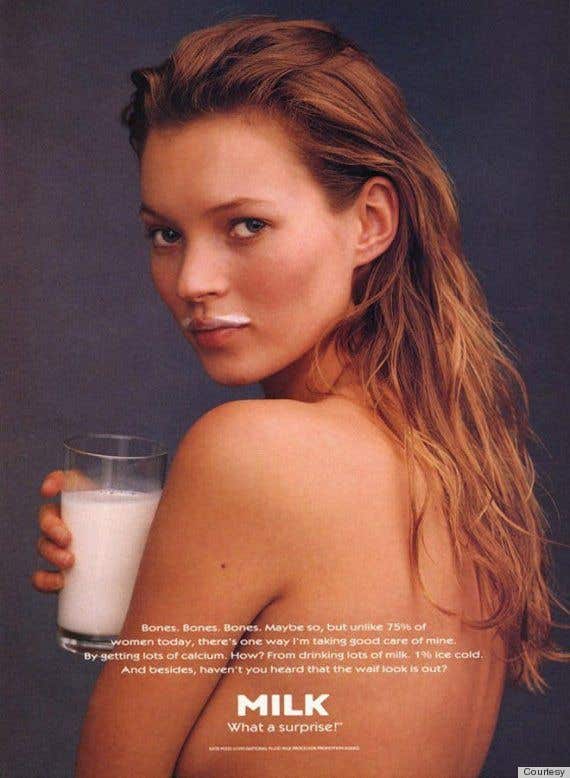
If you grew up in America between the 1950s and 1990s, you probably took for granted that milk was good for you. You may have drunk it with every meal: A bowl of cereal for breakfast. A half-pint carton on the cafeteria tray at lunch. A tall glass of milk to wash down dinner.
By the early ‘90s, however, "good for you" was apparently not good enough. The USDA and the dairy industry were ringing the alarm bells: Milk consumption was declining, putting a billion-dollar industry at risk. So a clutch of new marketing groups, created by the government and funded by a flood of cash, took a new tack: advertising.
Marketing groups with names like California Milk Processor Board and MilkPEP hired ad agencies to fill America's TV screens, magazines, and toys with advertisements for milk. Enter "Got Milk?" their most famous ad campaign, which set out to do something as elusive as it was ambitious—to make milk cool.
"Got Milk?" is one of the most successful advertising campaigns in American history. It was smart. It was everywhere. Chances are, you remember it vividly. But did it succeed?
The USDA Dietary Guidelines for Americans recommends two to three servings of dairy per day, and it’s been that way for decades. But little do most people know, drinking fresh milk is a thoroughly modern phenomenon.
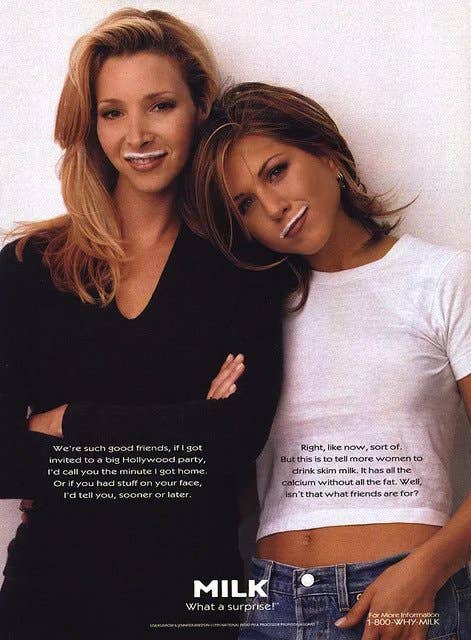
It wasn’t until refrigeration and pasteurization brought fresh milk to the masses in the early 20th century that Americans drink milk without worrying about getting sick. Farmers began producing so much, in fact, that after World War II, there was a nationwide surplus. So the federal government got involved. It bought up excess milk, which wound up in government cheese and on cafeteria trays via the national school lunch program, created in 1946.
Fast-forward to the 1980s, to the Reagan era, and a free-market ideology had taken hold. There was little appetite for agricultural subsidies. Legislators began favoring a model they’d rolled out in the ‘30s with Florida citrus growers: taxing farmers to fund advertising campaigns.
These "agricultural commodity checkoff programs," as they came to be called, were rooted in the idea that the government shouldn’t solve surpluses by having farmers produce less. Instead, farmers could help fund efforts to convince consumers to buy more of their products. In her 2016 history "The Incredible, Edible Checkoff," Sarah Milov, history professor at University of Virginia, described this shift in thinking as "the national stomach, rather than the national purse, [underwriting] American agriculture."
Checkoff programs became the new normal. In the ‘80s and early ‘90s they exploded, resulting in a flood of food advertisements that anyone who tuned in at the time will recognize: "The Incredible, Edible Egg," "Pork: The Other White Meat," and "Beef: It's What's for Dinner," to name a few.
The dairy industry didn't get one checkoff program—it got many, a near-impenetrable morass of organizations with generic-sounding names (case in point: Dairy Management Inc.). The boom started with the federal Dairy Production Stabilization Act of 1983, which required farmers to pay 15 cents for every 100 pounds of milk (11.6 gallons) they produced to fund research, product development, and advertising. Then came MilkPEP (funded by a checkoff for milk buyers) and the California state equivalent, the California Milk Processor Board, established in 1993.
In the early ‘90s, California’s milk industry was sweating about the future. Nationally, milk consumption had declined almost 20 percent over the previous two decades, down to less than one cup per person per day.
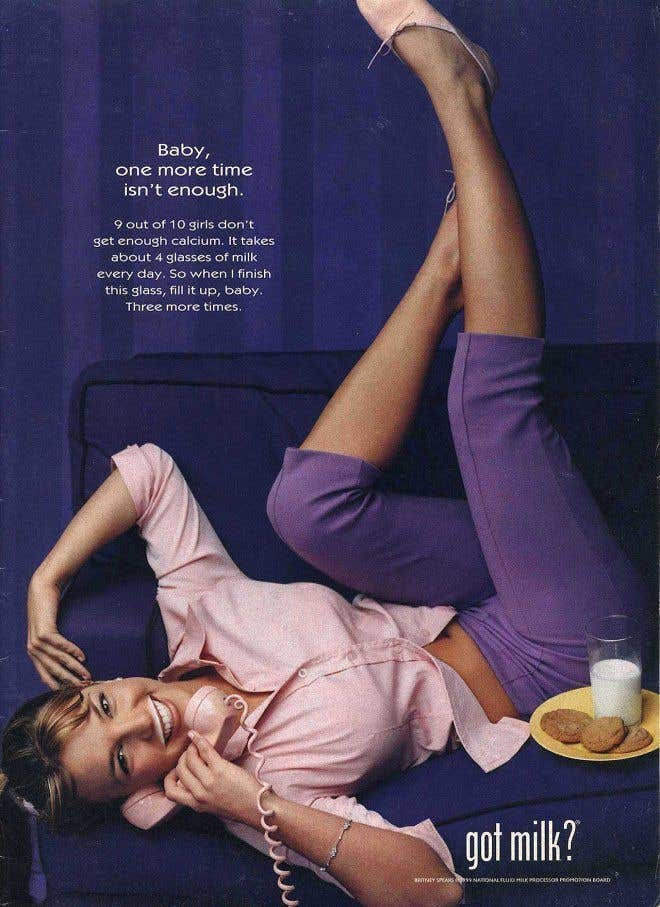
Hoping to curb the crisis, the California Milk Processor Board hired an ad exec named Jeff Manning, whom they tasked with rebranding the beverage. But the problem, as Manning writes in Got Milk? The Book, wasn't the public perception of milk—90 percent of Americans thought milk was healthy—but rather two other factors: Americans were dining out more, skipping the home-cooked meals that would’ve been accompanied by milk or juice. Many Americans also thought of milk as a kid's beverage, and in the post-Baby Boom years, the percentage of the U.S. population under age 18 was shrinking.
More critically, though, soft drinks, bottled iced tea, and bottled water were crowding out milk cartons in supermarket cases—the result of extremely well-funded branding and advertising. Soda consumption in America was crescendoing toward its 1998 peak, the year when Americans drank 53 gallons per person. "Milk was being outpackaged, outspent, and outflanked," Manning wrote. Americans had “shifted gears and left it behind."
That was the panorama when the board handed Manning a whopping $25 million ($51.3 million in today’s dollars) to create its first ad campaign. Manning teamed up with Goodby, Silverstein & Partners, an agency whose idea it was to skip the “good for you” talk and remind consumers that they loved milk so much, they'd panic if it ever went missing.
The earliest Got Milk? TV spots were unlike any government-sponsored ads America had ever seen. In one bizarre sketch, an Alexander Hamilton buff receives a surprise call offering him $10,000 to name Hamilton's assassin—problem was, he was eating a peanut butter sandwich and had run out of milk to clear his throat. (A young Michael Bay, who went on to make blockbusters like Bad Boys and Transformers, directed the spot.) Then there was the dad who ran out of milk at breakfast time and had to decide whether the baby or the cat should sacrifice their meal. The ads were witty, weird, and occasionally downright wicked. And they were such a runaway success that the national dairy checkoff organization took a page from California and licensed the campaign to run nationwide.
Around that time, MilkPEP, the national milk processor checkoff, joined the battle to make milk cool. Their contribution? Print ads featuring celebrities wearing milk mustaches. "You could not open a People magazine, or a Parade, without seeing a milk mustache," said Kikke Riedel of MilkPEP, who noted that the two campaigns joined forces in 1997 by tagging the photos with “Got Milk?” The ads, photographed by Annie Leibovitz, didn't just harness celebrity worship; they curated it, picking stars at the peak of their popularity such as a smizing Tyra Banks, Buffy’s Sarah Michelle Gellar, the band Hanson, and athletes like New York Knicks player Patrick Ewing.
In Got Milk’s heyday, the World Wide Web was in its infancy. Social media hadn't been dreamed up. So for A-listers, publicity opportunities like milk mustache ads—which were eye-popping headshots, distributed in national magazines—were golden. "We paid them very little money," Riedel said of the stars. "They would call us and beg to be in the campaign." TV gossip shows like Entertainment Tonight sometimes swooped in to film the photo shoot, doubling everyone's exposure. (An aside: Riedel now feels comfortable sharing that the mustaches were made with a “proprietary mix” of milk, ice cream, and sour cream.)
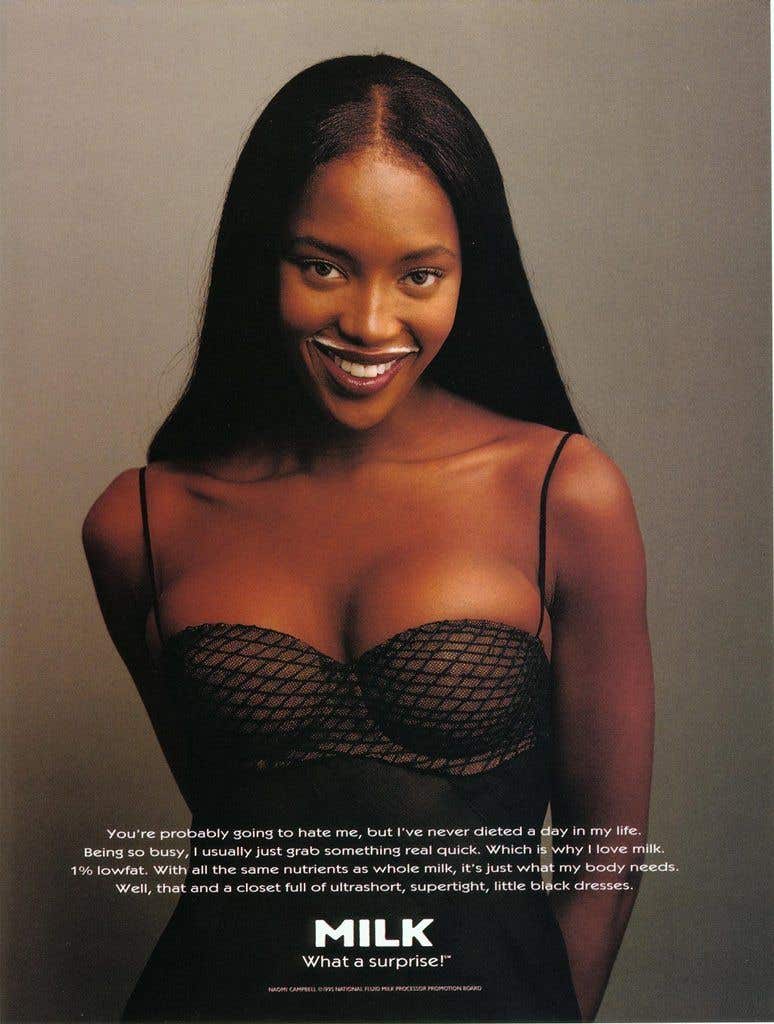
At the turn of the millennium, milk ads were ubiquitous. “Got Milk?” was printed on boxes of Cheerios and Oreos. Mattel produced a Got Milk? Hot Wheels toy truck, and toy stores stocked Got Milk? Barbies dressed in Holstein-patterned overalls. By 1997, wrote Manning, "National awareness of 'Got Milk?' would be over 80 percent and pushing 90 percent among teens."
Dairy farmers loved the campaign. "I thought it was incredible," says Alan Mann, a lifelong dairy farmer from Oregon who sells his milk to the Darigold cooperative. "It was the first thing I knew of that went viral."
Whether Got Milk? was an early-days meme or a good old-fashioned cliché, it was effective. Copycat phrases popped up everywhere. Got beer? Got hair? Got marketing? Got Jesus? The California board didn't bother suing most imitators: Mann, for his part, loved spotting these copycats, because he knew they were basically free advertising.
Milk did seem cool for a spell, but whether it got Americans to drink more milk is questionable. On the one hand, for a year or two in the mid-1990s, there was a microbump in milk drinking, as described in a corroborated 1999 study showing that milk checkoff ads caused a 6 percent hike in milk sales.
But by the end of the decade, the writing was on the wall: Americans were drinking less milk than ever, then averaging around two thirds of a cup per day per person. (By 2019, the last year with available statistics, that number would be less than a half a cup.) MilkPEP pulled the plug on the Got Milk? mustache campaign in 2014. It was the end of an era; The New Yorker wrote a eulogy.
Got Milk? could have only succeeded in the ‘90s. The ad campaign was forged in the crucible of the free-market optimism of the previous decade, propelled by network TV and glossy magazines at the peak of their popularity, and tinged with the wicked humor Gen X loved. Yet a single ad campaign, however savvy, couldn't compete against broader shifts in Americans’ food and drink preferences.
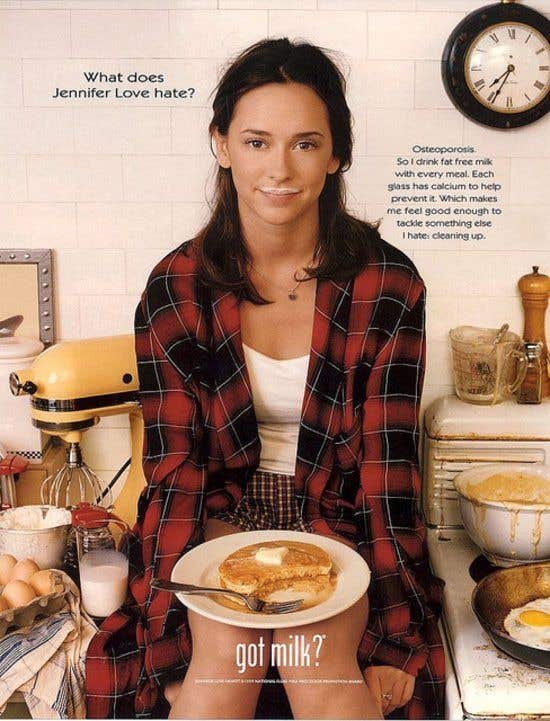
To be fair, Americans are still drinking plenty of milk—some 383 million gallons last July alone—But sales of bottled water, energy drinks, plant-based milks, and even kombucha are on the rise. In addition, we’re eating out more and more. Concern over dairy cows’ role in the climate crisis is growing. And as demographics shift, an ever larger percentage of Americans has trouble digesting lactose.
These days, instead of drinking milk, we're increasingly eating it—in the form of yogurt and cheese. Our cheese consumption has doubled since the early 1980s, and it’s no coincidence: The dairy checkoffs that once poured big bucks into Got Milk? advertising have since reinvested in other dairy products.
As the New York Times reported, Dairy Management Inc., the national dairy checkoff program, paid Domino's Pizza to put 40% more cheese on its pies in 2010. A few years later, it partnered with Pizza Hut to create—and sell us on—stuffed-crust pizza. The move is arguably more controversial than the Got Milk? campaign, since it revolves around the USDA—the same government body that gave us dietary guidelines—promoting what is essentially fast food.
Looking back, Got Milk? seems almost noble in its “successful” failure. Compared to a slice of stuffed-crust pizza or a sugar-bomb energy drink, a good old-fashioned glass of milk seems like a pretty healthy choice.
Keep Reading
Continue to Next Story










